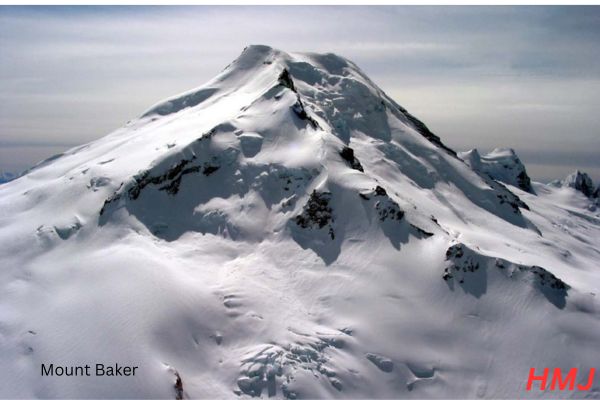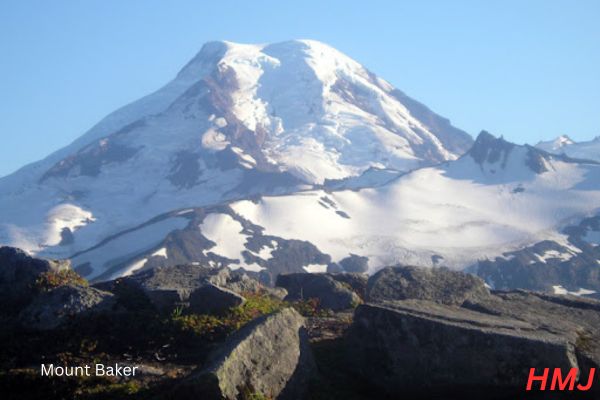The Mythical Snowfall of Mount Baker
Mount Baker, located in Washington State, isn’t just any mountain. Known for its record-breaking snowfall, it’s the USA’s snowiest peak and a marvel of nature. A staggering 1,000 inches of snow in a single season might sound like an exaggeration, but it’s a reality here. Let’s dive into what makes Mount Baker unique, why it receives such colossal snowfall, and its significance to enthusiasts and researchers alike.
The Snow King of North America
Mount Baker holds the world record for the most snowfall ever recorded in a single season—1,140 inches during the 1998-1999 winter. That’s almost 95 feet of snow! Situated in the Cascade Range, this stratovolcano stands out due to its unique geographical and meteorological conditions.
Snowiest places in the USA
Mount Baker’s title as one of the snowiest places in the USA draws adventurers, researchers, and weather enthusiasts from around the world.
What Makes Mount Baker a Snow Magnet?
The extraordinary snowfall at Mount Baker is no coincidence. The mountain’s location near the Pacific Ocean plays a crucial role. Warm, moist air from the ocean meets the cold Arctic winds over the Cascades, resulting in heavy precipitation. Additionally, Mount Baker’s high elevation amplifies snowfall during winter storms.
Factors influencing snowfall
Understanding these factors sheds light on why certain regions experience more snowfall than others and highlights Mount Baker as a natural phenomenon.
Life on Mount Baker: A Winter Wonderland
For locals and visitors alike, Mount Baker transforms into a snowy paradise each winter. The mountain offers world-class skiing, snowboarding, and hiking opportunities. Its abundant snow also supports the local economy by attracting tourists and adventure seekers.
Winter activities on Mount Baker
Activities such as snowshoeing and backcountry skiing make Mount Baker a dream destination for winter enthusiasts.
Challenges of Extreme Snowfall
While 1,000 inches of snow is awe-inspiring, it comes with challenges. Roads and infrastructure face significant strain, and avalanches become a frequent danger. The sheer volume of snow also poses logistical challenges for maintaining access to ski resorts and hiking trails.
Avalanche safety in snowy regions
Efforts to ensure safety in high-snowfall areas like Mount Baker underscore the importance of preparation and technology in navigating extreme winter conditions.
The Science Behind the Snow
Meteorologists and climate scientists are fascinated by Mount Baker’s snow patterns. Studying this area helps improve weather forecasting and deepens our understanding of climate change. Moreover, snow measurements from Mount Baker contribute valuable data to hydrological studies and water resource management.
Impact of climate on snowfall
As climate change alters weather patterns globally, Mount Baker remains a vital site for monitoring shifts in snowfall and temperature.
Historical Records and Their Significance
Mount Baker’s record snowfall in 1998-1999 wasn’t just a fluke—it marked a critical point in snow measurement history. The event showcased the importance of accurate recording methods and demonstrated the mountain’s potential for extreme weather phenomena.
Tips for Visiting Mount Baker in Winter
If you’re planning a trip to Mount Baker, preparation is key. Dress in layers, check avalanche reports, and ensure your vehicle is equipped for snowy conditions. Additionally, plan your activities to make the most of the breathtaking winter landscape.
Could 1,000 Inches Become a Regular Occurrence?
With weather patterns becoming increasingly unpredictable, some wonder if Mount Baker might see even more snow in future winters. Scientists emphasize that while it’s possible, understanding and mitigating the effects of climate change will be crucial.
A Snowy Wonder Worth Exploring
Mount Baker’s incredible snowfall makes it one of nature’s most fascinating spectacles. Whether you’re a winter sports enthusiast, a scientist, or simply someone who admires the power of nature, this mountain has something extraordinary to offer. Its 1,000-inch snow seasons remind us of the beauty and unpredictability of our environment.
FAQs :-
1. What makes Mount Baker the snowiest mountain in the USA?
Mount Baker is the snowiest mountain in the USA due to its location in the Cascade Range, where moist Pacific Ocean air meets cold Arctic winds. Its high elevation and the frequent winter storms that hit the region create ideal conditions for massive snowfall.
2. How much snow can Mount Baker receive in a single season?
Mount Baker can receive up to 1,000 inches (over 83 feet) of snow in a single season, with the highest recorded snowfall reaching 1,140 inches during the 1998-1999 winter.
3. What are the best winter activities on Mount Baker?
Mount Baker offers world-class skiing, snowboarding, snowshoeing, and backcountry hiking. The mountain attracts adventure seekers from around the world who enjoy its abundant snow and challenging terrain.
4. Are avalanches a concern on Mount Baker?
Yes, avalanches are a significant concern due to the mountain’s extreme snowfall. Visitors must check avalanche forecasts and take safety precautions when exploring the area.
5. How does Mount Baker contribute to scientific research?
Mount Baker plays a crucial role in meteorology and climate studies. The mountain’s unique snowfall patterns provide valuable data for weather forecasting, climate change research, and hydrological studies.
6. How should I prepare for a trip to Mount Baker in winter?
When visiting Mount Baker during the winter, dress in layers, bring appropriate gear for snow and cold temperatures, and always check avalanche warnings and weather conditions. Ensure your vehicle is equipped with snow tires or chains if necessary.
7. Is Mount Baker’s snowfall becoming more frequent or intense due to climate change?
While Mount Baker has seen record-breaking snowfalls in the past, the effects of climate change make snowfall patterns increasingly unpredictable. Continued research helps scientists understand how climate change might impact future snowfall trends in the region.

